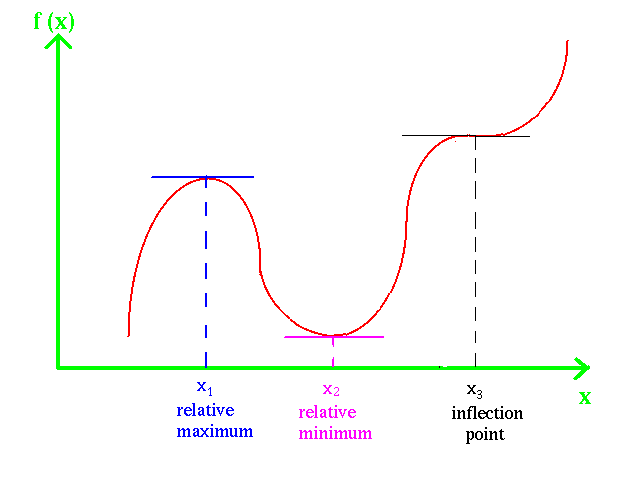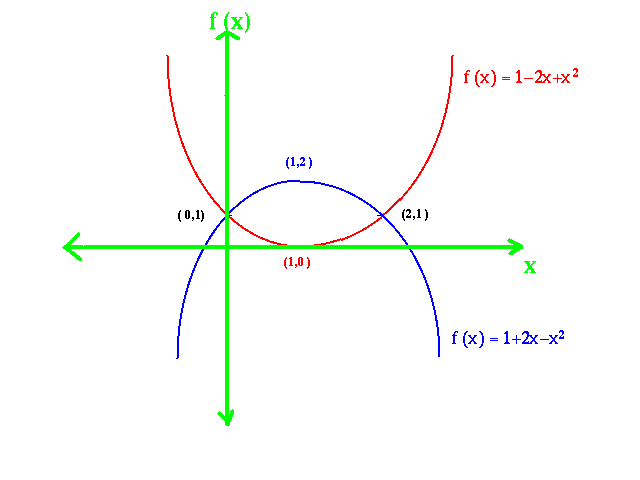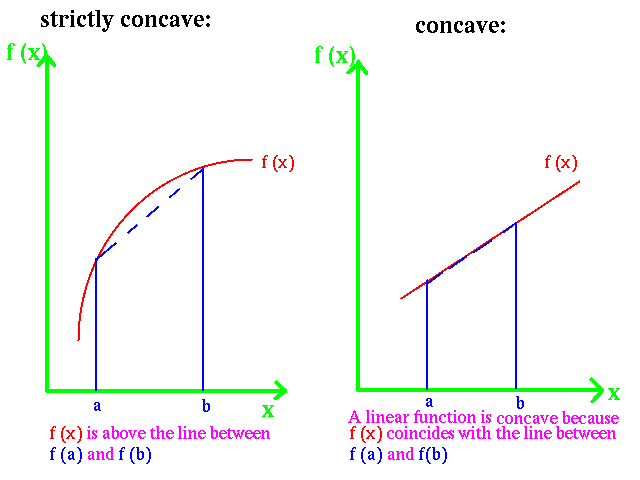
Step 1: Is the first element bigger than the second? If so the first element is the temporary maximum. If not, the second element is the temporary maximum.
Step 2: Is the next element bigger than the temporary maximum. If so, the next element becomes the temporary maximum.
Step 3: Repeat step 2 until the nth element in the set has been checked. The maximum is the temporary maximum.
Note than with a discrete set, the search for a maximum requires us to examine every element in the set to find a maximum. Let and suppose the set has the condition, monotonically decreasing difference, that for In this case there is a necessary condition for namely that and or . What this means in our search above is that we can quit the first time the new element is not made the temporary maximum.
or for all in a neighborhood of
The definition does not provide an easy means of finding a relative maximum because we would have to examine an uncountable number of points to check out the definition. A necessary condition which enables to focus our search for relative maxima is intuitively obvious by examining the graph of shown below:

If you will examine the picture you will see that at the relative maximum at that the tangent to is parallel to the axis. This means that the slope of the tangent is equal to 0 at . But, because the slope equals , a necessary condition that be a relative maximum is that
This necessary condition provides us with a condition that we can use to search for relative maxima.
Step 1: Determine
Step 2: Set and solve for
Now let us consider two cases
1.
2.
Apply the two steps:
1.
_ or
_
2.
_ or
_
However, if we look at the graphs of the two functions we can see that the first case is a relative maximum and the second case is a relative minimum.
 The problem is that is the only condition we use is to search for we will find relative maxima, relative minima as well as inflection points. We need a stronger condition to separate these three cases.
The problem is that is the only condition we use is to search for we will find relative maxima, relative minima as well as inflection points. We need a stronger condition to separate these three cases.
Since this is a freshman course, we will use a condition which will greatly simplify the problem. The type of functions we shall consider in this course will all have the property of concavity.
Definition: is concave over its domain if for any two points and in its domain,
> or = where 0 < c < 1
Two graphs of concave functions are shown. The first case is > ( strictly concave) and the second case with linear segments is =.

What simplification does concavity give us? With concavity the necessary condition becomes both necessary and sufficient that an which satisfies is a global (not relative) maximum. With concavity there can only be one global maximum. If is strictly concave, the maximum is unique. If is just concave, the maximum is not necessarily unique. See graph below:
 Sample Problems:
Sample Problems:
1.
_
_ or
_
_Now remember that and
_Therefore we raise each side to the power of 4.
_
_or
2.
_
_ or
_
_We raise each side to the power of (3/2).
_ or
Consider the following optimization problem: Find which maximize subject to the constraint that . We shall solve this problem by substitution which reduces the optimization problem to one dimension.
From the constraint we obtain and we substitute this relationship into to obtain . We can then optimize to obtain and obtain .
Examples:
1. max subject to
__
__
__
__ which implies
__
__cross multiply the denominators and
__multiply both sides by 2
__ or __ and
2. max subject to
__
__
__
__
__
__Raising both sides to a power of 2:
__ or __ and